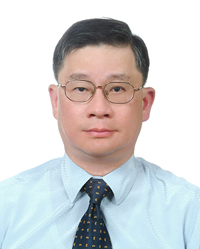楊志忠 Chih-Chung (C. C.) Yang
Distinguished Professor, Graduate Institute of Photonics and Optoelectronics, National Taiwan University
主要研究領域:
顯示照明技術、奈米光子學、發光二極體半導體材料及元件、生醫光電及表面電漿子學Major Research Areas:
Display and Lighting Technologies, Nano-photonics, Light-emitting Diode Semiconductor Materials and Devices, Biomedical Photonics and Surface plasmonics研究領域摘要:
Research Summary:
Research Area I: GaN and ZnO semiconductors
1. Metalorganic chemical vapor deposition of GaN related compounds
(1) Growth of InGaN/GaN quantum-well light-emitting diode (LED) epitaxial structure
(2) Growth of regularly patterned GaN nanorod arrays for LED and field emission applications
(3) Growth of N-polar GaN
(4) Growth of nitrides on Si substrate
2. Molecular beam epitaxy of ZnO and GaN related compounds
(1) Growth of CdZnO/ZnO quantum-well LED epitaxial structure on p-GaN
(2) Growth of GaZnO as transparent conductor
(3) Growth of InGaN/GaN quantum-well LED epitaxial structures on flexible GaN template
3. Novel LED design and fabrication
(1) Regularly patterned InGaN/GaN quantum-well core/shell nanorod LED array
(2) LED on Si substrate
(3) Surface plasmon coupled LED
(4) Surface-grating LED
(5) Photoelectrochemical liftoff of sapphire substrate
(6) Vertical LED
(7) Flexible nitride LED
(8) GaN/ZnO hybrid ac LED
4. Material analysis and optical characterization
(1) Transmission electron microscopy study of GaN and ZnO nanostructures
(2) Raman spectroscopy study of GaN and ZnO nanostructures
(3) Temperature-dependent photoluminescence spectroscopy for the study of GaN and ZnO nanostructures
(4) Time-resolved photoluminescence spectroscopy for the study of GaN and ZnO nanostructures
Research Area II: Biomedical photonics
1. Optical coherence tomography (OCT)
(1) Optical Doppler tomography
(2) Photothermal OCT
(3) Surface plasmon OCT
(4) Application of OCT to cell labeling
(5) Application of OCT to oral precancer and cancer diagnoses
2. Nano Biotechnology
(1) Cancer cell labeling with bio-conjugated Au nanoring
(2) Cancer cell inactivation with bio-conjugated Au nanoring
(3) Cancer cell uptake of bio-conjugated Au nanoring
(4) Photothermal therapy of xenografted human oral cancer tumor on nude mouse with bio-conjugated Au nanoring
Research Area III: Surface plasmonics
1. Theoretical/numerical study of surface plasmon coupling with light emitter/absorber
(1) Surface plasmon coupling induced emission efficiency enhancement
(2) Surface plasmon coupling induced light extraction enhancement
(3) Coupling behavior of a light emitter with surface plasmon polariton
(4) Surface plasmon coupling induced sunlight absorption enhancement in solar cell
2. Surface plasmon coupled LED
(1) Fabrication of surface metal nanoparticles for inducing localized surface plasmon resonance in the blue-green range
(2) Fabrication of surface plasmon coupled vertical LED
(3) Using surface plasmon coupling for reducing the efficiency droop effect of LED
(4) Investigation of the coherent emission of a surface plasmon coupled LED
3. Localized surface plasmon behavior of bio-conjugated Au nanoring
(1) Fabrication of bio-conjugated Au nanorings of various geometries for inducing localized surface plasmon resonance in the spectral range of 1000-1300 nm for deeper tissue penetration
(2) Application of bio-conjugated Au nanoring to OCT imaging
(3) Application of bio-conjugated Au nanoring to photothermal therapy of cancer tumor

-
B.S.
National Taiwan University, 1976 -
M.S.
University of Illinois, Urbana- Champaign, 1981 -
Ph.D.
University of Illinois, Urbana- Champaign , 1984
-
Address
EE2-443,
Department of Electrical Engineering,
National Taiwan University,
Taipei 106, Taiwan -
Phone
+886-2-33663643 -
FAX
+886-2-23652637 -
Email:

-
Personal Homepage
http://cc.ee.ntu.edu.tw/~ccy